• Flaggen
• historische Flaggen
• historische Flaggen der Landesteile
• Bedeutung/Ursprung der Flagge
• Wappen
• historische Wappen
• Bedeutung/Ursprung des Wappens
• Flugzeugkokarde
• Landkarte
• Zahlen und Fakten
• Geschichte
• Ursprung des Landesnamens
• Cyrenaica
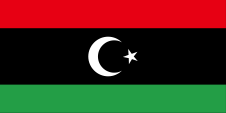
seit 2011,
Flagge des Nationalen Übergangsrats,
de facto Nationalflagge,
Seitenverhältnis = 1:2,
Quelle, nach: Wikipedia (D)





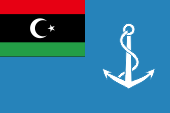
seit 2011,
Marineflagge,
Seitenverhältnis = 2:3,,
Quelle: EllsworthSK, Public domain, via Wikimedia Commons




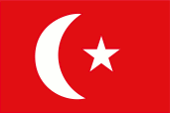
bis 1911,
Flagge des Osmanischen Reiches,
Quelle, nach: Wikipedia (D)



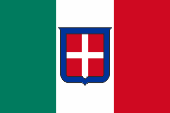
1911–1943,
National- und Handelsflagge Italiens,
Seitenverhältnis = 2:3,
Quelle, nach: Das Flaggenbuch



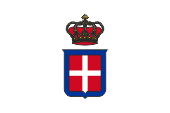
1911–1943,
Flagge des Gouverneurs der italienischen Kolonie Libyen,
Seitenverhältnis = 2:3,
Quelle, nach: Das Flaggenbuch




1951–1969,
Nationalflagge,
Seitenverhältnis = 1:2,
Quelle, nach: Flags of the World





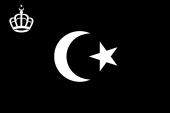
1951–1969,
Flagge des Königs,
Seitenverhältnis = 2:3,
Quelle, nach: Flags of the World




1969–1972,
Nationalflagge,
Seitenverhältnis = 1:2 (2:3?),
Quelle, nach: Flags of the World




1972–1977,
Nationalflagge,
Seitenverhältnis = 1:2 (2:3?),
Quelle, nach: World Statesmen




1977–2011,
Nationalflagge,
Seitenverhältnis = 1:2,
Quelle, nach: Flags of the World






1977–2011,
Marineflagge,
Seitenverhältnis = 2:3,
Quelle: commons.wikimedia.org,
Public domain, via Wikimedia Commons




Senussi Emirat (Cyrenaica):
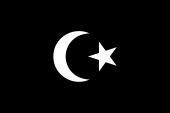
1949–1950,
Nationalflagge,
Seitenverhältnis = 2:3,
Quelle, nach: World Statesmen



Tripolitanien:

1911–1913,
Nationalflagge,
Seitenverhältnis = 2:3,
Quelle, nach: World Statesmen



Tripolitanien:
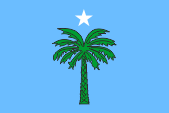
1918–1923,
Nationalflagge,
Seitenverhältnis = 2:3,
Quelle, nach: World Statesmen




Die heutige Flagge Libyens wurde während der Rebellion des Jahres 2011 wiederbelebt. Es handelt sich eigentlich um die Flagge des Königreiches Libyen, das zwischen 1951 und 1969 bestand. Sie zeigt drei Streifen in Rot, Schwarz und Grün im Verhältnis 1:2:1 mit einem silbernem Halbmond und Stern in der Mitte. Die Buntfarben der Flagge scheinen heute folgendermaßen definiert zu sein, und zwar hexadezimal: Rot = #e70013, was Pantone 1788 entsprechen würde, Grün = #239e46, was Pantone 355 entsprechen würde. Libyen besteht aus den drei historischen Landesteilen Tripolitanien, Cyrenaica und Fessan. Tripolitanien wurde genau wie Cyrenaica von einer lokalen Dynastie beherrscht. Das blieb auch unter der Herrschaft der Osmanen so. Diese lokalen Herrscher durften zeitweilig neben der osmanischen Flagge auch eigene Flaggen verwenden, je nach dem ob sie im Moment gerade über eine begrenzte Autonomie verfügten oder nicht. Unter der Herrschaft der Italiener wurde dieses Prinzip bis in die zwanziger Jahre des 20. Jahrhunderts beibehalten. Während und nach dem Zweiten Weltkrieg verblieb Libyen zwar bei Italien, wurde aber in eine britische und eine französische Besatzungszone aufgeteilt. Tripolitanien und Cyrenaica gehörten zur britischen Zone, Fessan war französisch. Nach dem Pariser Frieden von 1947 musste Italien auf Libyen verzichten und Libyen wurde Treuhandgebiet der UN. Die Besatzungszonen blieben erhalten. Bereits 1949 entschied die UN die Cyrenaica unter dem Senussi-Orden und seinem Emir Mohammed Idris as-Senussi die Unabhängigkeit zu entlassen. Ganz Libyen wurde ab 1952 die Unabhängigkeit zugesagt. Die Flagge des Senussi-Emirats war schwarz mit silbernem Halbmond und Stern in der Mitte. Nachdem Libyen als Vereinigtes Königreich unabhängig geworden und der Senussi-Emir König geworden war, wurde diese schwarze Flagge, ergänzt um eine Krone, als Flagge des Königs beibehalten. Die bei der Erlangung der Unabhängigkeit eingeführte Nationalflagge war diejenige der Cyrenaica, jedoch ergänzt um einen roten Streifen oberhalb des schwarzen, breiten mittleren Streifens und um einen grünen Streifen unterhalb. Die drei Streifen sollten die drei Landesteile Fessan, Cyrenaica und Tripolitanien repräsentieren. Mit der Bildung der Republik (1969) wurde eine Flagge in den nasseritischen Farben Rot, Weiß und Schwarz eingeführt, jedoch ohne Sterne in der Mitte. Außerdem wurde ein Wappen eingeführt, das demjenigen Ägyptens sehr ähnlich war. Am 01.01.1972 wurde die gemeinsame Flagge der Föderation Arabischer Republiken eingeführt, waagerecht gestreift in den Farben Rot, Weiß und Schwarz mit dem Wappen der Föderation (der Falke der Koraischiden) in Gold in der Mitte. Der einzige Unterschied bestand im Schriftzug unterhalb des Adlers. Als am 19.11.1977 Ägypten Friedensgespräche mit Israel begann, wurden in Libyen die Föderationflaggen heruntergerissen und verbrannt. Libyen nahm die grüne Flagge an. Die einfarbige grüne Flagge, entsprach der Farbe des Islam, war aber auch eine Erinnerung an die "Grüne Revolution", zu der der 1969 an die Macht gekommene Oberst Muammar Al-Gaddafi aufrief, der Libyen in ein Lebensmittel produzierendes Land verwandeln wollte. Der Farbendreiklang von Rot, Weiß und Schwarz wird manchmal als Panarabische Farben bezeichnet. Das ist so nicht ganz richtig. Die drei Farben gehen zurück auf Gamal Abd el-Nasser, ägyptischer Offizier, Politiker sowie späterer Staats- und Ministerpräsident (1918–1970), wichtigster Vertreter des arabischen Nationalismus und Panarabismus. Nach der nationalen Revolution des Jahre 1952 wurde in Ägypten die Arabische Befreiungsflagge eingeführt, welche eben diese Ideale repräsentierte. Sie wurde, zumindest in der Auswahl und Anordnung Vorbild für viele andere arabische Staaten und Staatenbündnisse. Die Farben stehen immer für die Revolution (Rot), die Zukunft (Weiß) und die Vergangenheit (Schwarz). Die Farben Rot, Weiß und Schwarz gehen auf die Flagge des Arabischen Aufstandes im Ersten Weltkrieg zurück. Zu den Farben des Arabischen Aufstandes (Arabische Bewegung) gehört allerdings noch Grün.
Quelle/Source:
Flaggen und Wappen der Welt,
Die Welt der Flaggen,
Flaggen Wappen Hymnen,
Wikipedia (EN)


seit 2021,
Wappen von Libyen,
Quelle/Source: Government of National Unity of the State of Libya,
Public domain, via Wikimedia Commons


1969–1972,
Wappen von Libyen,
Quelle/Source: Corel Draw 4
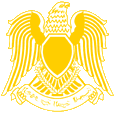
1972–1977,
Wappen von Libyen,
Quelle/Source: Corel Draw 4
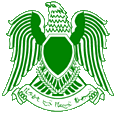
1977–ca.1990,
Wappen von Libyen,
Quelle/Source: Corel Draw 4
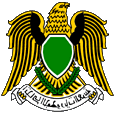
ca.1990–2011,
Wappen von Libyen,
Quelle/Source: Corel Draw 4

Bei der Proklamation der Republik wurde ein Wappen eingeführt, das demjenigen Ägyptens fast genau glich, und den Adler Saladins zeigte. Im Zusammenhang mit dem Inkrafttreten der Föderation Arabischer Republiken (Ägypten, Syrien, Libyen) am 01.01.1972 wurde auch ein neues Wappen, das Wappen der Föderation eingeführt. Es zeigte den Falken der Koraischiden in Gold. Der einzige Unterschied war das Spruchband in den Fängen des Adlers. Bei Libyen stand dort: "Arabisch-Libysche Republik". Mit dem Ende der Föderation am 19.11.1977 änderte Libyen sein Staatswappen ab. Der Falke hatte nun ein grünes Brustschild und blickte im heraldischen Sinne nach Rechts. Wahrscheinlich seit dem Ende der 80-er Jahre des 20. Jahrhunderts verwendete Libyen den Falke in einer schwarz-goldenen Ausführung, nur das Brustschild und die Olivenzweige blieben grün, und der Falke blickt wieder nach Links.
Quelle/Source:
Flaggen und Wappen der Welt,
Die Welt der Flaggen,
Flaggen Wappen Hymnen,
Wikipedia (EN)


1962–1969,
Flugzeugkokarde,
Quelle/Source: nach/by Wikipedia (EN)

1969–1977,
Flugzeugkokarde,
Quelle/Source: nach/by Wikipedia (EN)

1977–2011,
Flugzeugkokarde,
Quelle/Source: nach/by Wikipedia (EN)
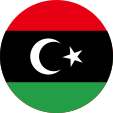
2011–2014,
Flugzeugkokarde,
Quelle/Source: nach/by Wikipedia (EN)

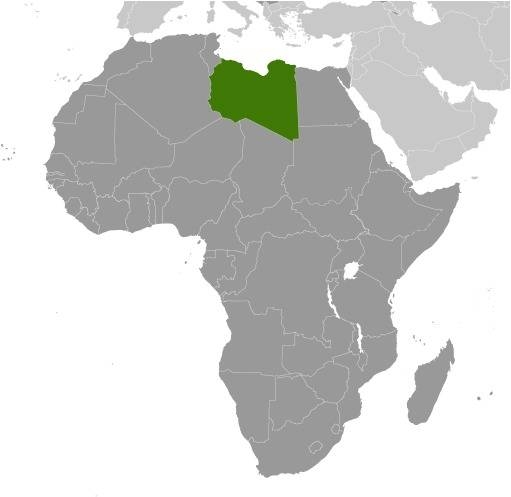
Quelle/Source: CIA World Factbook
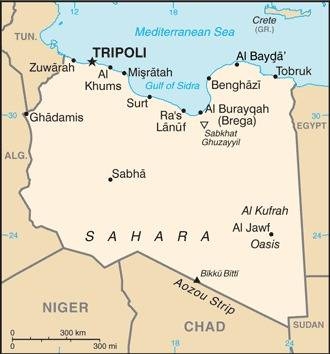
Quelle/Source: CIA World Factbook
Fessan, Cyrenaica, Tripolitanien,
Aozou:
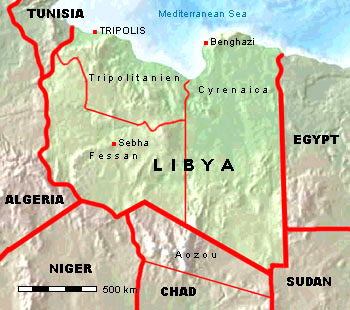
Quelle/Source: Freeware,
University of Texas Libraries,
modyfied by:
Volker Preuß

Fläche: 1.759.540 km²
Einwohner: 6.900.000 (2020), davon 97% Araber und einige Berber (Tuareg)
Religionen: 97% Moslems (Sunniten), 1,2 % Christen (meist Katholiken)
Bevölkerungsdichte: 4 Ew./km²
Hauptstadt: Tripolis (arabisch: Tarabulus), 1.780.000 Ew. (2007)
Amtssprache: Arabisch
sonstige Sprachen: Tuareg-Sprachen
Währung: 1 Libyscher Dinar (LYD, LD) = 1000 Dirhams
Zeitzone: MEZ + 1 h
Quelle/Source:
Wikipedia (D),
Länder der Erde

500 v.Chr. · Kolonisierung der Cyrene (Cyrenaica) durch Griechen, Kolonisierung von Tripolitanien durch Karthago
201 v.Chr. · Karthago muss nach dem 2. Punischen Krieg Tripolitanien an das Römische Reich abtreten
74 v.Chr. · Eroberung von Cyrene (Cyrenaica) durch das Römische Reich
395 · bei der Teilung des Römischen Reiches kommt Cyrene (Cyrenaica) an das Oströmische Reich (Byzanz), und Tripolitanien zum Weströmischen Reich
439 · die Wandalen erobern Nordafrika und gliedern Tripolitanien ihrem Reich ein
533 · das Wandalenreich wird von Byzanz erobert
642–643 · Eroberung von Cyrene (Cyrenaica) durch das Arabische Kalifat
667–670 · Eroberung von Tripolitanien durch das Arabische Kalifat, in der Folgezeit Einwanderung von Arabern, Islamisierung, weitgehende Vertreibung der ursprünglichen Einwohner
1509–1551 · Tripolis ist spanische Kolonie
1521 · Eroberung von Cyrenaica durch das Osmanische Reich, Eingliederung als Provinz Barka
1551 · Eroberung von Tripolitanien durch das Osmanische Reich, Eingliederung als Provinz Tripolis
ca. 1560 · Eroberung von Fessan (Tuareg-Staat) durch das Osmanische Reich, Eingliederung als Provinz Fessan
1911–1912 · Italienisch-Türkischer Krieg, Italien erobert Tripolitanien und die Cyrenaica
1925 · Italien erobert den Fessan
1934 · Zusammenfassung der italienischen Besitzungen Tripolitanien, Cyrenaica und Fessan zur Kolonie Libyen (Libia)
1939–1945 · Zweiter Weltkrieg: Fessan wird 1942 von Truppen des Freien Frankreich bestzt, Tripolitanien und die Cyrenaica werden 1942–1943 von britischen Truppen erobert, Aufteilung in eine britische und eine französische Besatzungszone
1947 · Frieden von Paris, Italien muss auf Libyen verzichten, Libyen wird Treuhandgebiet der UNO
1949 · Cyrenaica wird unter dem Senussi-Orden und seinem Emir Mohammed Idris as-Senussi unabhängig
24.12.1951 · ganz Libyen wird als Vereinigtes Königreich Libyen unabhängig (die Länder Tripolitanien, Cyrenaica und Fessan sind autonome Landesteile und bilden eine Föderation), Emir Mohammed Idris as-Senussi wird König Idris I., die USA und Großbritannien erhalten Militärstützpunkte (Wheelus Field, Tripolis, Mursuk und Tubruk)
15.04.1963 · neue Verfassung, die drei Länder werden aufgelöst und werden in Verwaltungseinheiten aufgeteilt
01.09.1969 · nationalistische arabische Offiziere unter Führung von Oberst Muammer Al-Ghadafi stürzen die Monarchie und proklamieren die Republik
1970 · USA und Großbritannien müssen ihre Stützpunkte räumen, italienische Siedler und alle Juden müssen das Land verlassen
1972–1977 · rein formale Föderation mit Syrien und Ägypten in der Union Arabischer Republiken (bis zum 19.11.1977)
1973 · Libyen besetzt den Aozou-Streifen im Norden des Tschad
1977 · neue Verfassung, Libyen nennt sich jetzt Sozialistische Libysche Arabische Volksjamahiriya (Jamahiriya = Massenstaat)
1980–1989 · Libyen engagiert sich im Bürgerkrieg des Tschad
1980–1988 · Libyen unterstützt den Iran im Ersten Golfkrieg (Iran gegen Irak)
1986 · militärische Intervention der USA gegen Libyen, Bombardierung von Tripolis und Bengasi
1989 · Friedensvertrag mit dem Tschad, der Aozou-Streifen bleibt von Libyen besetzt
1991 · Libyen unterstützt den Irak im Zweiten Golfkrieg (USA gegen Irak)
1992, 1993 · Sanktionen der UNO gegen Libyen
1994 · Libyen räumt unter Aufsicht der UNO den Aozou-Streifen im Tschad
1999 · die UNO-Sanktionen von 1992 und 1993 werden aufgehoben
2005 · Normalisierung der internationalen Beziehungen
Februar 2011 · zunächst Demonstrationen, später Aufstand gegen die Herrschaft von Oberst Muammer Al-Ghadafi, vor allem in Cyrenaica, allmählicher und stetiger Vormarsch der Aufständischen unter Feuerschutz der NATO
22.08.2011 · Eroberung von Tripolis durch die Aufständischen, Sturz der Herrschaft von Oberst Muammer Al-Ghadafi, ein Nationaler Übergangsrat übernimmt de facto die Macht
20.10.2011 · Oberst Muammer Al-Ghadafi wird bei Kämpfen in seiner Heimatstadt Syrte nach seiner Gefangennahme von den Aufständischen bestialisch gefoltert und ermordet
06.03.2012 · die Region Cyrenaica erklärt sich für autonom
2012–2021 · Libyen zerfällt in Machtbereiche verschiedener Warlords und Milizen, darunter islamische (in Cyrenaica) und radikal-islamische Milizen (in Tripolitanien), ethnische Milizen der Tubu und der Tuareg (in Fessan), und militärische Verbände von Al-Kaida und Islamischer Staat (Küstenstädte), es gibt zwei große verfeindete Gruppierungen, mit eigenem libyschen Parlament: Abgeordnetenrat (in Tobruk, Cyrenaica, international anerkannt), Allgemeiner Nationalkongress (in Tripolis, Tripolitanien, international nicht anerkannt)
05.02.2021 · Abgeordnetenrat und Nationalkongress einigen sich auf eine gemeinsame Präsidentschaft und einen Premier, die eine Übergangsregierung bis zu den nächsten freien Wahlen bilden sollen
Quelle:
Atlas zur Geschichte,
Wikipedia (D),
Discovery '97,
Volker Preuß

Dazu gibt es drei Theorien:
1.)
Der griechische Name "Libya" geht auf ein ursprünglich von den Ägyptern im Altertum verwendetes Wort zurück. Sie bezeichneten damit alle Territorien die im Westen an ihr Reiches angrenzten. Die Griechen haben es übernommen und das Wort "Libya" für ganz Afrika mit Ausnahme Ägyptens verwendet.
2.)
Der Name "Libya" ist der arabische Name der berberischen Mondgöttin "Kar", die nicht nur in Libyen, sondern in ganz Nordafrika verehrt wurde. Er heißt übersetzt angeblich "vor Regen tropfend".
3.)
Das Wort "Libya" heißt in einer alten, antiken, nicht genau zu identifizierenden Sprache "Flamme" oder "entflammt", vielleicht eine Anspielung auf die heiße Steinwüste Hammada al-Hamra.
Quelle:
Handbuch der geographischen Namen,
Atlas der wahren Namen,
Volker Preuß

Seit dem Ende der Herrschaft von Oberst Muammar Al-Ghadafi, tritt der Gegensatz zwischen dem Osten und dem Westen des Landes verstärkt zu Tage. Der Westen gilt als liberal, der Osten als religiös. Der Osten Libyens ist die Region Cyrenaica, die sich unter Ghadafi Benachteiligungen ausgesetzt gesehen hat, und diese jetzt kompensieren möchte. Es gibt Pläne Libyen in die drei früheren Regionen Tripolitanien, Cyrenaica und Fessan aufzuteilen, eine Politik, die vor allem von Cyrenaica aus betrieben wird. Die Teilungspläne sind recht konkret, und die Absicht das Land Cyrenaica bis zu den libyschen Ölfeldern und Ölhäfen auszudehnen enthalten jede Menge politischen Sprengstoff. Die Flaggenfrage scheint für Cyrenaica auch schon entschieden.
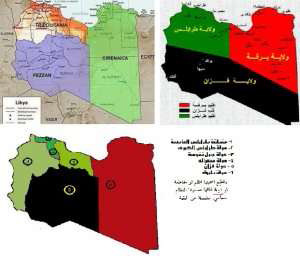
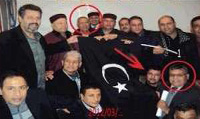
Quelle: julius-hensel.com


![]()


























































